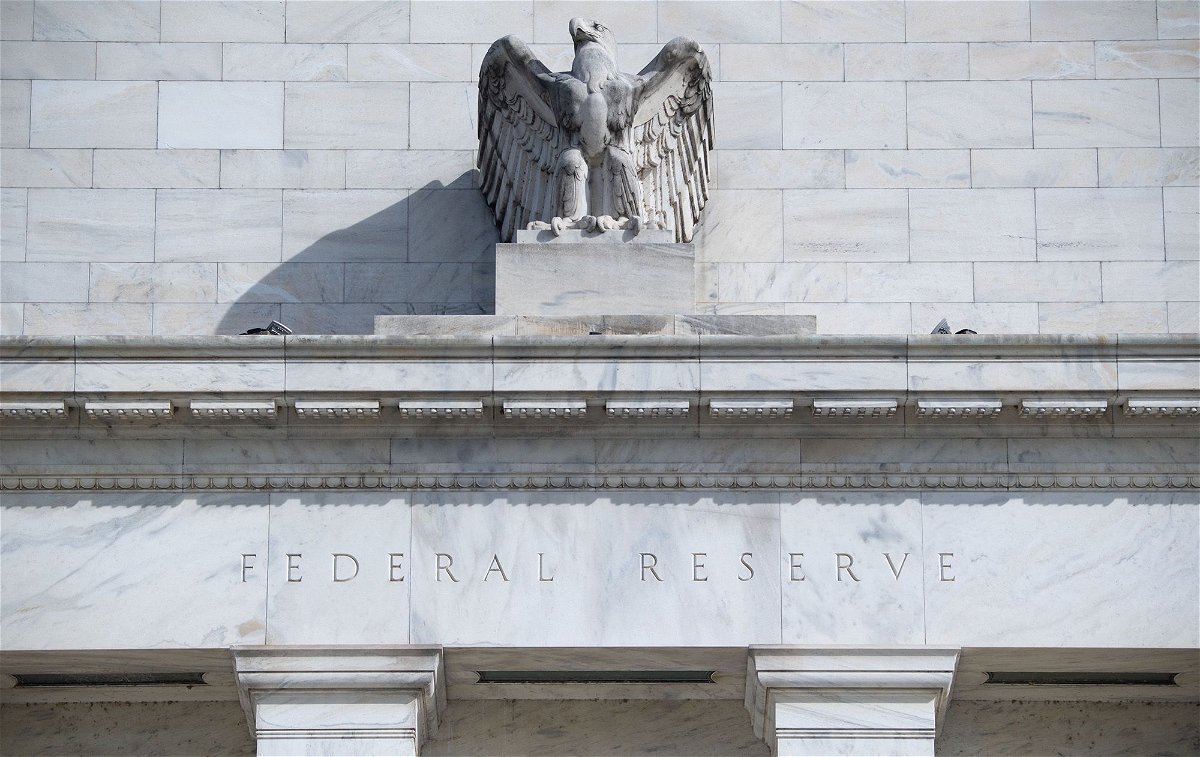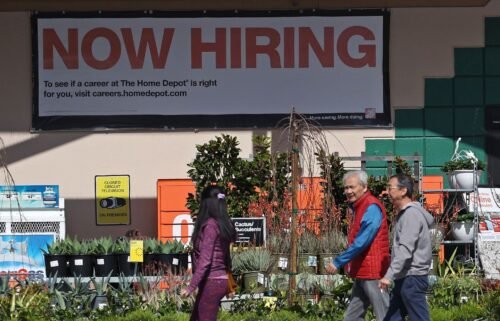America may have done the impossible: Avoid a recession

The Federal Reserve has raised interest rates to the highest level in over two decades to clamp down on inflation. Many economists were certain the central bank's aggressive fight would put the economy into a recession — that hasn't panned out.
New York (CNN) — For the past couple years, all the smart money was on a US recession taking place sometime before the next presidential election. To be clear: That absolutely could still happen. In the world of economics, nothing is certain. But it’s looking extremely unlikely that America’s economy will go into reverse anytime soon.
Around this time last year, some of the most closely watched economists were all predicting a recession. As the year went on, they revised their forecast, instead penciling in a mild recession. But like the Federal Reserve, many began ditching the recession narrative altogether.
Which raises the question: How in the world did America avoid a recession? The Fed spent the past 20 months doing everything in its power to slow America’s economy down to combat runaway inflation with full awareness that it could inadvertently cause millions of Americans to lose their jobs.
It hiked its key interest rate target 11 times over that span — and at a historic pace. The Fed hadn’t raised rates so much and that fast since America’s last inflation crisis 40 years ago — and in 1980, the Fed hiked rates so high that it plunged the economy into the deepest recession since the Great Depression.
The Fed also sold off trillions of dollars of bonds and other debt it had bought up over the years, sapping demand for Treasuries, which pushed yields higher. Consumer loans, mortgages, credit cards and other lending rates tied to those yields surged, devastating America’s housing market, which is on pace for its worst year since 1993.
Yet nearly two years into the Fed’s campaign to slow America’s economy, it may have done the impossible: rein in inflation without plunging us into a recession.
To be fair, practically no one is a fan of America’s economy right now, sinking President Joe Biden’s favorability ratings. But jobs are booming, consumers are still spending, and the situation could be a whole lot worse. America’s economy grew at an electric annualized rate of 5.2% last quarter, a stunning achievement considering the stress the Fed put on it.
If the Fed avoids a recession, its remarkable goal would have been accomplished with a combination of luck and ingenuity.
A lot of luck
Fed Chair Jerome Powell admits he didn’t expect the economy to hold up this well against the backdrop of the historic rate-hiking campaign.
Resilient has been the buzz word of the year. Powell and his colleagues have used it to describe the banking system, the consumer, the labor market and more.
As to why everything and everyone has been so resilient, Powell & Co. might have been gifted a bit of dumb luck.
The job market remains incredibly robust in part because of lingering changes from the pandemic. The so-called Great Resignation during and after the Covid lockdown meant that businesses were in dire need of employees who collectively said “take this job and shove it.” That meant companies had to raise pay to attract new workers, and mass layoffs have remained rare over the past several years.
America’s booming job market helped give the Fed cover to keep raising rates without sinking the economy.
Some other luck factored in: Since 2021, Americans have shopped till they dropped, aided at first by federal stimulus checks at the onset of the Biden administration, then by so-called revenge travel as Covid restrictions eased. The Fed even cited Taylor Swift’s Eras Tour over the summer as an unexpected boost to the economy. And holiday shopping, though somewhat muted compared to previous years, has remained reasonably strong.
Even some bad news turned out to be good for the Fed’s effort to avoid a recession: The regional banking crisis in March hurt the economy just enough that the Fed at the time that it could slow its historic rate hikes a bit. That saved businesses and consumers some funds that they would have otherwise paid for their mortgages or credit card bills.
Good policy
But the Fed deserves a ton of credit, too.
“Most people don’t think about what the alternative could have been,” Lael Brainard, former Fed vice chair and current director of President Biden’s National Economic Council, told CNN Friday. “But obviously, forecasters did put out very clearly what they anticipated a year ago, and it was very close to 100% odds, in some cases, that there would be major job losses and a recession in order to get inflation to where it is today.”
Not exactly 100%, though: Even as his boss, JPMorgan Chase CEO Jamie Dimon, was predicting storm clouds ahead for the US economy, Bruce Kasman, global head of economic research at the bank, was one of the few to push back against the recession predictions brewing last year.
Rightfully, Kasman took a victory lap at a conference hosted last month by JPMorgan. “The reason we pushed back against a recession last year at this time was not because [there] wasn’t a significant monetary policy drag building,” Kasman said. “If you looked at what was happening elsewhere, you had this big positive from unwinding commodity price shocks. You had a big positive from US fiscal policy, which I think people had not really appreciated.”
“When you put these things together, it just didn’t feel like the economy was very vulnerable,” Kasman added.
Despite criticism from both sides of the aisle, the independent Fed stayed the course, pledging to do whatever it took to stymie runaway inflation — a feat it has largely accomplished.
Although prices in many cases remain significantly higher than they were two years ago, the Fed brought inflation down to an annual rate of 3.1%, down from its peak of 9.1% over a year ago. That’s still above its target rate of 2%, but the Fed predicts it will gradually get there by 2026.
Had the Fed altered from its course, price hikes probably would have continued to run rampant. But hike rates too high, and the Fed could have done considerably more damage to the economy.
That’s usually what happens: The Fed has achieved a so-called soft landing — in which it raises rates but avoids a recession — once in the past 60 years (well, depending on how you count; some research says the Fed has actually done it more often).
The job is hardly done, though, Brainard noted.
“We have a lot of work to do,” she said. “There are certain areas where Americans continue to see really challenging affordability.”
Powell recently told a group of college students a big party for him is when there’s “a really good inflation report.” One can only imagine the hangover Powell will have if those reports keep coming and a recession does not.
The-CNN-Wire
™ & © 2023 Cable News Network, Inc., a Warner Bros. Discovery Company. All rights reserved.
CNN’s Matt Egan contributed to this report.


